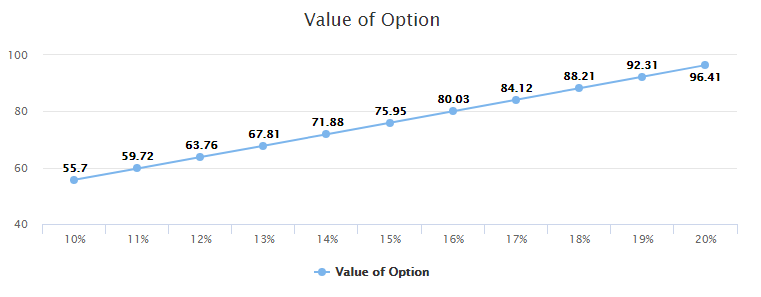Historical Volatility
Historical volatility is the actual computed volatility of the stock/security/asset over the past year.
It acts as a reference point for understanding whether the IV is higher or lower as compared to the historical volatility.
Options are insurance contracts, and when the future of an asset becomes more uncertain, there is more demand for insurance on that asset. When applied to stocks, this means that a stock’s options will become more expensive as market participants become more uncertain about that stock’s performance in the future.
When the uncertainty related to a stock increases and the option prices are traded to higher prices, IV will increase. This is sometimes referred to as an “IV expansion.”
On the opposite side of IV expansion is “IV contraction.” This occurs when the fear and uncertainty related to a stock diminishes. As this happens, the stock’s options decrease in price which results in a decrease in IV.
How to know when an option is underpriced or overpriced?
This is sort of the most important question for any traders and specially, the ones who trade volatility.
Take historical volatility of an asset and put it to Black Scholes model, You will get the Call and Put options for various strike prices and that can be compared with current option prices. (But, We generally only tally ATM options as complexities kick in with far strike prices.)
However, this is all a theoretical approach. Generally, if IV is higher than historical IV, It can be easily assumed that options are overpriced by this theory.
You should remember that the IV’s are usually high ahead of any specific event or announcement and fall after the same and hence option prices may not move exactly the same way as the stock/contract does due to the change in the IV.

As can be seen in the above diagram, Option values will be higher if the IV is greater and vice versa.
In the current case, if the IV went up from the current levels of 15% to 20%, the value of the option would go up to 96.41 and in case the IV went down to 10%, the value of the option would go down to 55.70.
To check the IV’s for a variety of contracts of the same underlying, you can check the same on the Option chain available on the NSE Website. (We are assuming you are trading in Indian options and using NSE as your stock exchange. Anyways, every stock exchange which allows options trading also provides Option Chain.)

